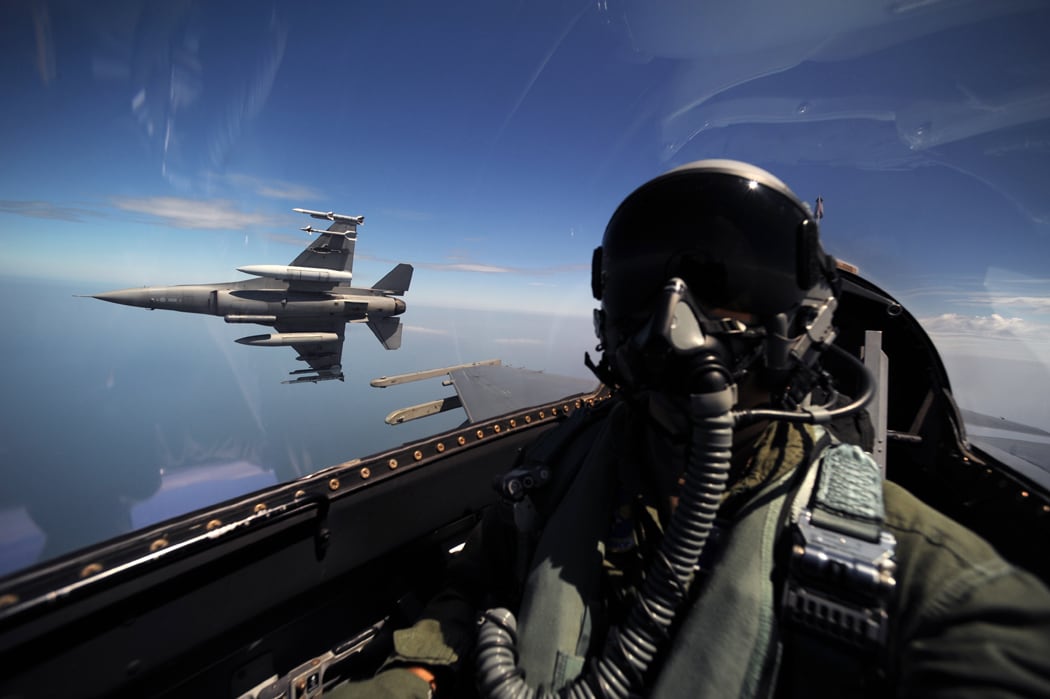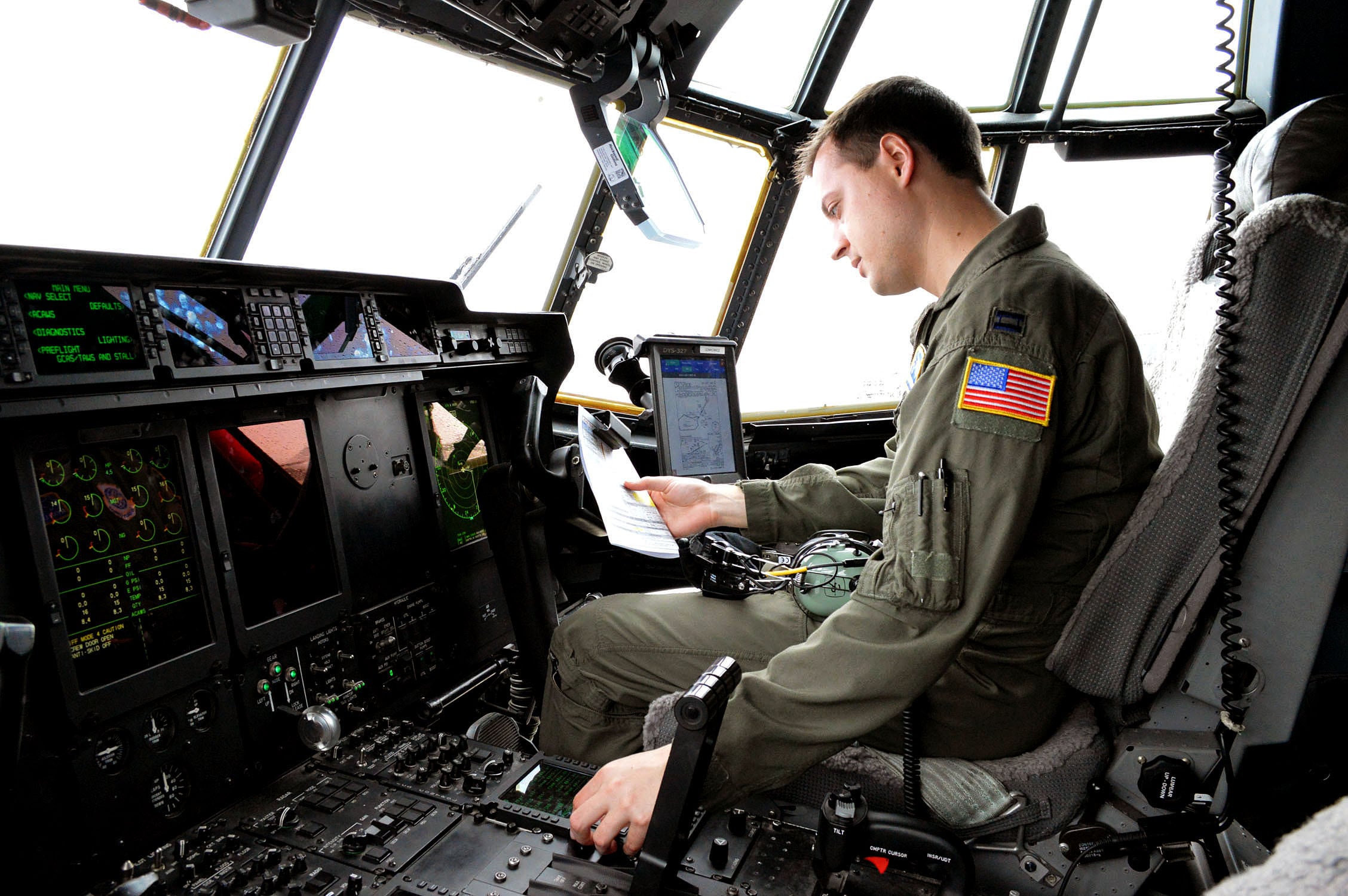The Air Force on Thursday began allowing some experienced fighter pilots and weapon systems officers to stay in their assignments for three more years, as part of its ongoing effort to stop an alarming pilot exodus.
The new Second Assignment In-Place pilot program targets certain active duty 11F fighter pilots and 12F fighter weapon systems officers with less than a three-year active-duty service commitment serving as instructor or evaluator pilots. The program is voluntary.
To qualify, those pilots or WSOs must either be lieutenant colonels or lieutenant colonel selects with at least 17 years Total Active Federal Military Service, or majors who have been passed over for promotion with at least 14 years of service. They also must be serving at one of 16 wings, squadrons or groups under Air Education and Training Command, Air Combat Command, or Air Force Materiel Command.
Brig. Gen. Mike Koscheski, who last month was put in charge of an Aircrew Crisis Task Force dedicated to solving the pilot retention problem, said in a Wednesday interview that the program is meant to provide stability to pilots later in their careers. For example, he said, some have families and children in school, and they may want to avoid having to uproot them as part of a permanent change-of-station move every three years.
Koscheski said that the need for more stability was a common refrain heard from pilots and other aircrew members as the Air Force conducted interviews in the field, collected exit surveys from departing officers, and conducted an aircrew retention summit.
“They’re looking for stability, longer term, for all the reasons you can imagine ― family, kids in school, all of that,” Koscheski said. ”Stability is a common theme that‘s coming out of the aircrew force.”
To be eligible, Koscheski said, pilots or WSOs must be in the last six months of their three-year assignment and deemed ”vulnerable to move.” If an officer is accepted, he said, it essentially resets their clock to the beginning of the three-year assignment cycle.
Koscheski said no more than 10 officers from each unit will take part in the program, and the total population will probably be under 100. The Air Force will study how many officers accept the offer in the first four months and see what changes, if any, need to be made before deciding whether to broaden it to other pilots.
For more than a year, top Air Force leaders have been sounding the alarm about the service’s fighter pilot shortfall, and the service has had trouble convincing pilots to pass up lucrative offers from the commercial airline industry. At the end of fiscal 2016, the active, Guard and Reserve components of the Air Force combined were looking at a shortfall of 1,555 pilots in all, including 1,211 fighter pilots.
Over the last year, the Air Force has rolled out several initiatives intended to stem that tide, including eliminating additional duties and adding more support staff to allow pilots more time in the cockpit, and by increasing financial incentives ― in some cases, considerably.
RELATED

But despite those efforts, Koscheski said the shortfall is still likely to increase slightly by the end of fiscal 2017, although he couldn’t say by how much.
The problem, Koscheski said, is that the Air Force continues to lose more airmen to airlines as they further upped their hiring in 2017. Meanwhile, the Air Force’s production of new pilots has remained largely unchanged at about 1,200 a year.
The Air Force eventually wants to produce 1,400 new pilots each year. But, Koscheski said, there are a lot of factors that hamper pilot production, including weather, spare parts availability, maintenance shortfalls, and manning levels of instructor pilots, so it takes some time to make those shifts. By fiscal 2020, Koscheski said, the Air Force will start to be on the path to 1,400 per year.
In the meantime, he said, the Air Force is looking at other innovative ways to work with the civilian world to try to produce more pilots nationally. That could include partnering with civilian flying schools to try to recruit their graduates, who could use that experience to skip some parts of Air Force pilot training, he said. It could also mean holding incentive flights with the Civil Air Patrol, the Air Force’s auxiliary, to inspire young people to pursue careers in aviation, and helping Air Force Junior Reserve Officer Training Corps cadets obtain private pilot licenses.
RELATED

“The pilot shortage is a national pilot crisis, because the majors and the regionals are short of pilots as well,” Koscheski said. ”It‘s in all of our interests to get after the national pilot crisis.”
Koscheski said the Air Force is also planning to try to cut down on the amount of unnecessary computer-based training that keeps pilots out of cockpits, as well as hiring more civilians to serve in support staffs and take care of administrative work instead of pilots.
These are the units that will be eligible for this pilot program:
AETC
- 12th Flying Training Wing, Randolph Air Force Base, Texas.
- 14th Flying Training Wing, Columbus Air Force Base, Mississippi.
- 81st Fighter Squadron, Moody Air Force Base, Georgia.
- 33rd Fighter Wing, Eglin Air Force Base, Florida.
- 47th Flying Training Wing, Laughlin Air Force Base, Texas.
- 56th Fighter Wing, Luke Air Force Base, Arizona.
- 54th Fighter Group, Holloman Air Force Base, New Mexico.
- 550th Fighter Squadron, Kingsly Field, Oregon.
- 71st Flying Training Wing, Vance Air Force Base, Oklahoma.
- 80th Flying Training Wing, Sheppard Air Force Base, Texas.
ACC
- 53rd Wing, Eglin Air Force Base, Florida.
- 4th Fighter Wing, Seymour Johnson Air Force Base, Florida.
- 325th Fighter Wing, Tyndall Air Force Base, Florida.
- 355th Fighter Wing, Davis-Monthan Air Force Base, Arizona.
AFMC
- 96th Test Wing, Eglin Air Force Base, Florida.
- 412th Test Wing, Edwards Air Force Base, Florida.
Stephen Losey is the air warfare reporter for Defense News. He previously covered leadership and personnel issues at Air Force Times, and the Pentagon, special operations and air warfare at Military.com. He has traveled to the Middle East to cover U.S. Air Force operations.





